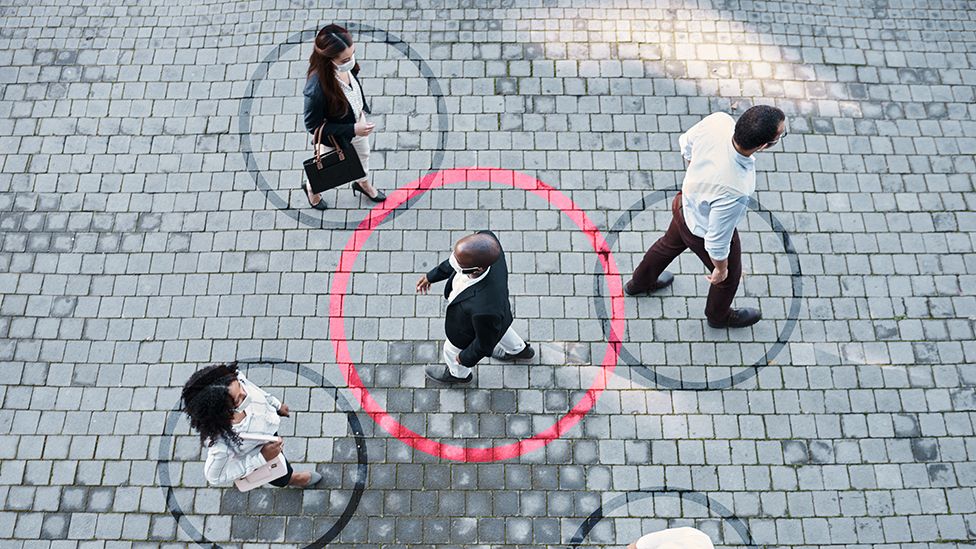Coronavirus: What is the R number and how is it calculated?
- Published
- comments

The rate at which coronavirus infection is falling in the UK - as measured by the R number - has continued to level off.
The latest R estimate from the government's scientific advisory group Sage, is between 0.7 and 0.9, up slightly from the week before.
It means that, on average, every 10 people with Covid will infect between seven and nine other people.
What is R?
The R number is a way of rating coronavirus or any disease's ability to spread.
R is the number of people that one infected person will pass on a virus to, on average.
Measles has an R number of 15 in populations without immunity.
That means, on average, one person will spread measles to 15 others.
Coronavirus - known officially as Sars-CoV-2 - would have a reproduction number of about three if no action was taken to stop it spreading.
How is R calculated?
You can't capture the moment people are infected. Instead, scientists work backwards.
Data - such as the number of people dying, admitted to hospital or testing positive for the virus over time - is used to estimate how easily the virus is spreading.
Why is a number above one dangerous?
If the R value is higher than one, then the number of cases keeps increasing.
But if the R number is lower the disease will eventually stop spreading, because not enough new people are being infected to sustain the outbreak.
Governments everywhere want to force the R number down from about three (the R number if we took no action) to below one.
What is the R number in the UK?
The R number is not fixed. Instead, it changes as our behaviour changes or as immunity develops.
Mathematical modellers at Imperial College London attempted to track how the number changed as isolation, social distancing and the full lockdown were introduced in spring of 2020.
Before any measures came in, the R number was well above one and the conditions were ripe for a large outbreak. Successive restrictions brought it down, but it was not until full lockdown that it was driven below one.
Although the R number across the UK is now between 0.7 and 0.9, there are regional differences.
Scotland's estimated R number is between 0.8 and 1.0, up slightly on the previous week.
In Wales the number is between 0.6 and 0.9 - while in Northern Ireland it remains between 0.75 and 0.95.
In England, the number is risen slightly to between 0.8 and 1.0.
Is it the most important number?
The R number is one of the big three.
Another is severity - some people have a very mild disease that does not cause many problems. But coronavirus and the disease it causes, Covid-19, can be severe and deadly.
The last is the number of cases, which is important for deciding when to act. If you have a high number, but ease restrictions so the reproduction number is about one, then you will continue to have a high number of cases.
What about a vaccine?
A vaccination programme, like the one currently under way in the UK, is another way to bring down the reproduction number.
A coronavirus patient would naturally infect three others on average, but if a vaccine could protect two of them from infection, then the reproduction number would fall from three to one.
- GLOBAL SPREAD: How many worldwide cases are there?
- VACCINE: How many people in the UK have been vaccinated so far?
- SYMPTOMS: What are they and how to guard against them?
- LOOK-UP TOOL: How many cases in your area?
- TEST AND TRACE: How does it work?